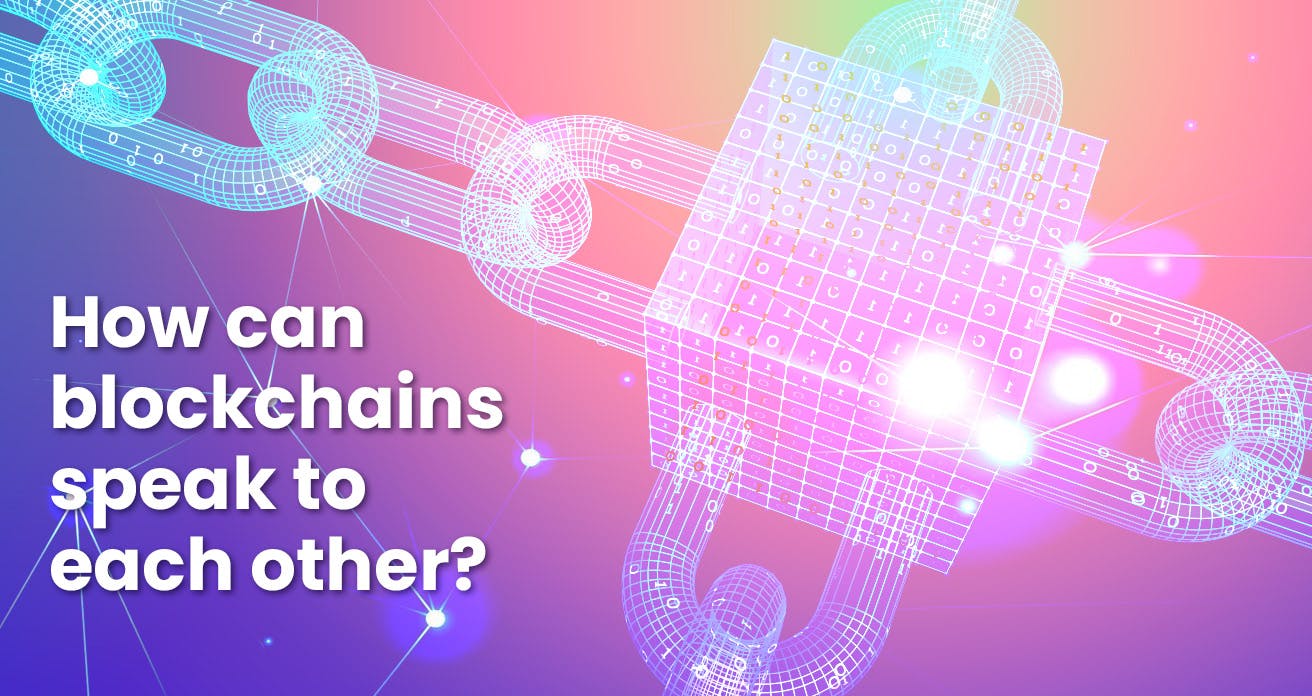Blog

[Beginners Guide] How can blockchains speak to each other?
The internet has evolved to become a massive web where different applications, websites and platforms seamlessly connect, allowing you to access a world of information. Now, think of blockchains as individual islands, each with its unique rules and systems. These islands, while powerful, can't easily talk to each other. This lack of communication is where blockchain interoperability comes into play.
Why Interoperability Matters in the Blockchain World
Picture this: there are more than 100 different blockchains out there, each optimized for specific features like speed, security, or flexibility. Interoperability would enable these diverse blockchains to work together, like having a universal language that allows all these islands to collaborate effectively. This collaboration is crucial not just for developers building new applications but also for traditional systems integrating blockchain technology into our everyday lives.
Basic Interoperability: Centralized Exchanges
Imagine a situation where you want to transfer tokens from one blockchain to another. Naively, this is impossible: it would be like trying to deposit US dollars into a bank account in Europe that is held in Euros. Clearly, the asset must be exchanged first. In the blockchain world, as in the banking world, companies exist that hold pools of multiple currencies and allow a user to exchange one for another (for a fee). Such entities are known as centralized exchanges, as a centralized company is responsible for holding the user’s funds. The advantages of centralized exchanges are that they completely step-over the problem of cross-chain interoperability, while the disadvantage is that if the company goes bankrupt, then the users’ funds are lost.
An alternative to a centralized exchange is a decentralized exchange (DEX), where a network of smart contracts automatically executes the exchange of tokens, without requiring any centralized authority. DEXs that swap tokens within the same chain are relatively straightforward, in that all of them are ‘speaking the same language’ of the same chain. The challenge arises when DEXs wish to operate between chains, and this has seen the rise of atomic swaps and bridges.
Decentralized Interoperability: Atomic Swaps and Bridges
A common way of exchanging tokens between chains is to use an atomic swap. In this technique, the buyers and sellers agree to lock their tokens within special, time-constrained smart contracts on each chain, using cryptographic hashes to prove that they have done so, in a way that guarantees that neither can ‘cheat’ the other. Clearly, this is a slightly cumbersome way of exchanging tokens, as it requires individual buyers and sellers to agree on the terms of the swap. However, it is highly secure.
A more flexible approach is to use a ‘bridge’, where tokens from one chain are locked in a smart contract, before being automatically recreated (or ‘wrapped’) into an equivalent on another chain. Bridges are common and powerful methods for interoperability, but they can be complicated to set up and operate, and there have been many exploits that have managed to steal currency via a faulty bridge.
More Advanced Interoperability: CCIP, and XCM
Bridges succeed in enabling different chains to transfer value, but they require individual tailoring to each specific pair of chains. Chainlink are attempting to standardise this process by creating an open-source Cross-Chain Interoperability Protocol (CCIP) - an agreed standard by which all bridges can operate.
More powerful still is the Cross-Chain Messaging (XCM) protocol being developed by Polkadot. This approach is more flexible because, rather than just permitting tokens to be exchanged between chains, it permits arbitrary messages to be exchanged between different consensus mechanisms, in a completely trustless manner. It means you can send a message from Ethereum to a Polkadot parachain, or even allow two separate smart contract mechanisms to communicate with each other.
In this interconnected future, the limitations of isolated blockchains fade away. Welcome to the dawn of the interconnected blockchain era, where communication knows no boundaries, and collaboration knows no limits. The future is here, and it speaks the language of blockchain interoperability.

